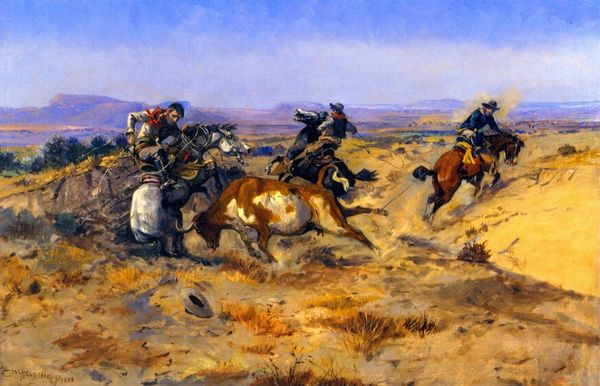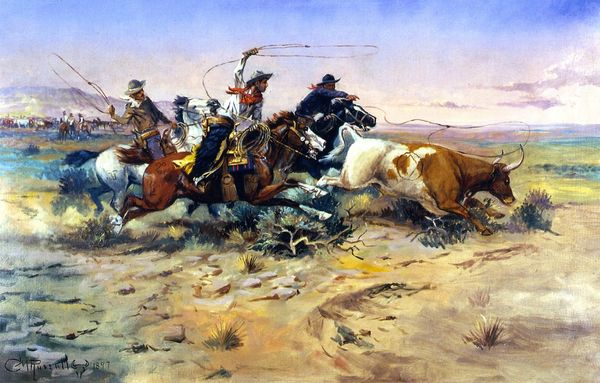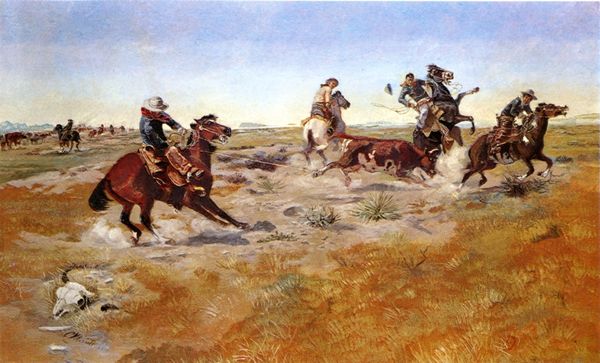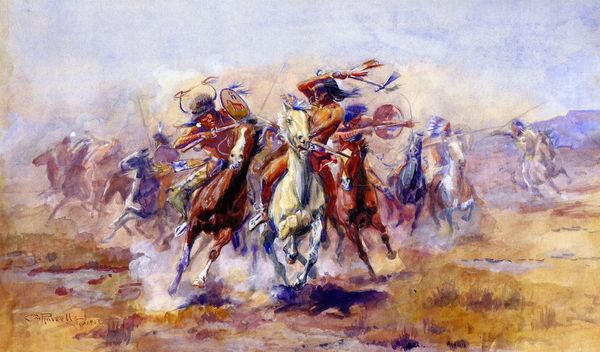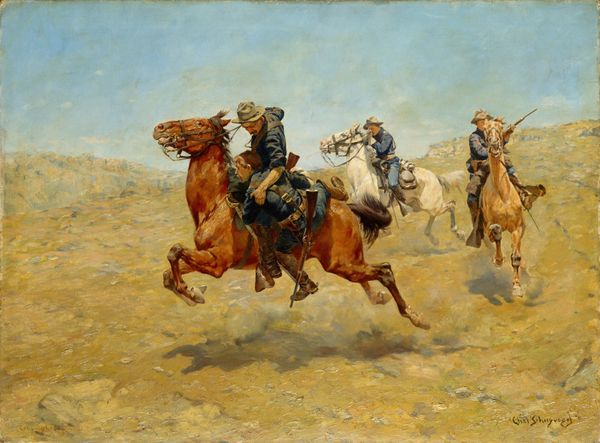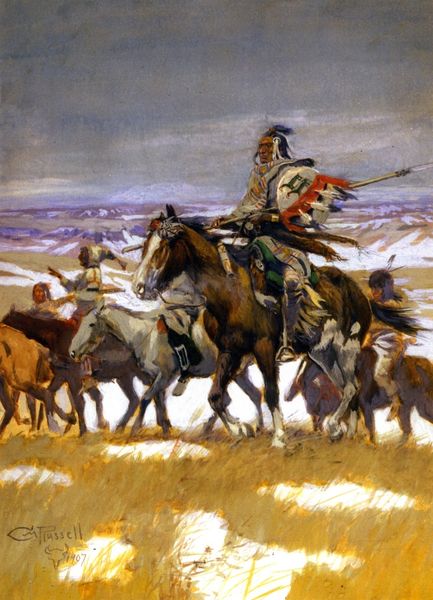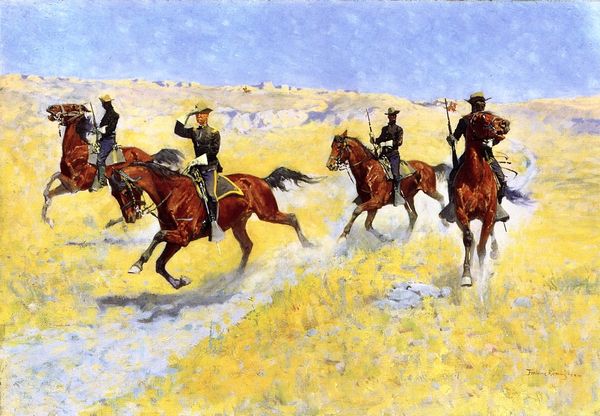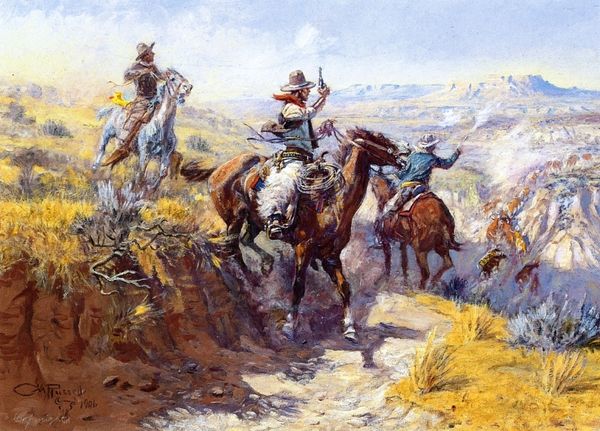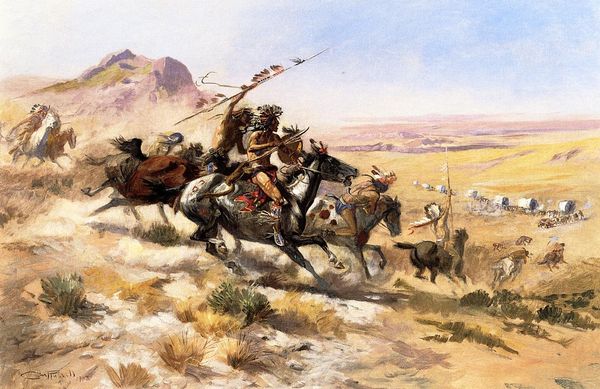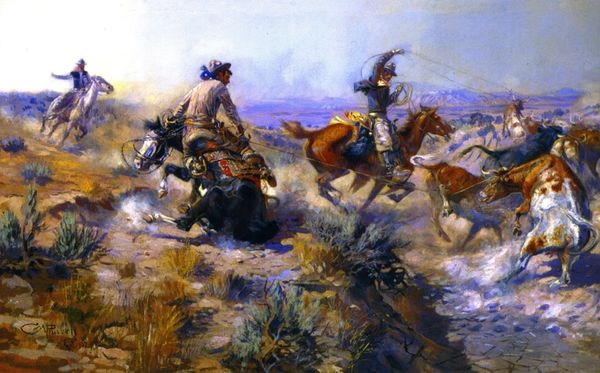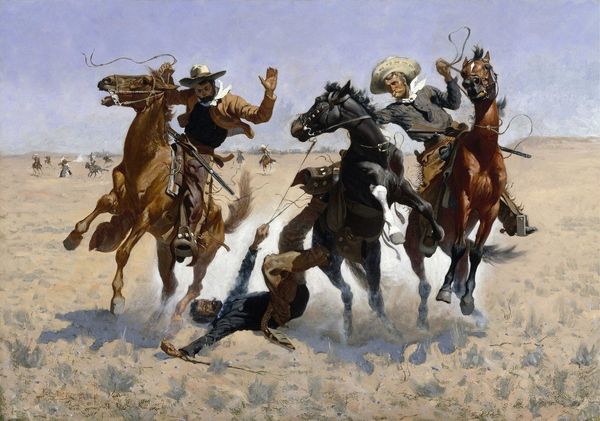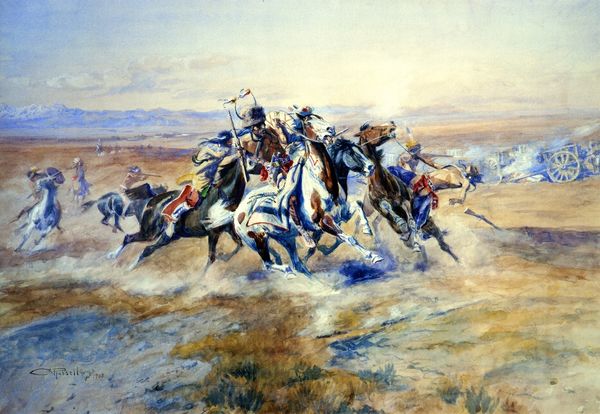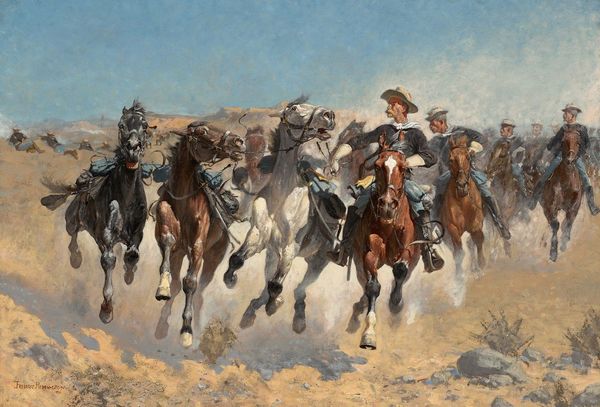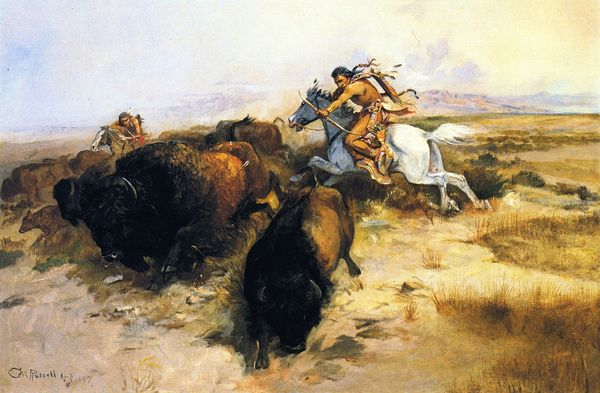
Copyright: Public Domain: Artvee
Curator: Let's turn our attention to Frederic Remington's “A Dash for the Timber,” created in 1889 using oil on canvas. Editor: Well, that’s quite the scene! I get this immediate sense of...frantic energy, you know? Like a Western movie climax condensed into a single, dusty moment. Makes me want to yell "Yeehaw!" but also makes my palms sweat a bit. Curator: It certainly evokes a visceral reaction. Considering Remington's position as a key chronicler of the American West, it’s compelling to consider this painting through the lens of labor and its representation. The cowboys, likely engaged in cattle drives or boundary disputes, are depicted in the thick of demanding, dangerous work. Editor: Right! Dangerous indeed. Look at the tension etched onto their faces, those flared nostrils of the horses. You can almost feel the grit hitting your teeth. But tell me more, who were these men? Laborers, but were they celebrated? Exploited? A bit of both, I imagine? Curator: Undoubtedly, the cowboy archetype existed within complex socio-economic and cultural systems. Remington's work contributes to the romanticized ideal of the rugged individualist, but when we look closer, we might also ask: who owned the cattle? What were the labor conditions? The dust, the speed—all this contributed to the labor experience. Editor: Mmm, that dust, almost looks like the whole thing is a sepia toned daydream. It is romanticized for sure, but beautiful. Almost obscures the class struggles somewhat, or, elevates labor to heroic performance. It’s got this operatic quality to it. Do you think it glosses over any of the harder edges of frontier life? Curator: Perhaps, and it certainly invites analysis of the romantic versus real. I think this piece encourages us to contemplate not only the represented subject of western expansion, but also Remington's role in manufacturing this idealized vision. This particular painting and how it uses romanticism, in my opinion, tells an important story about material practices in culture and art making. Editor: Alright, well I'm walking away ready for a cowboy adventure. This made me think of an interesting connection, that maybe there's nothing separating my escapist fantasies of that era and its reality. Fascinating stuff.
Comments
No comments
Be the first to comment and join the conversation on the ultimate creative platform.
